Aug 18, 2025 Back through Canberra
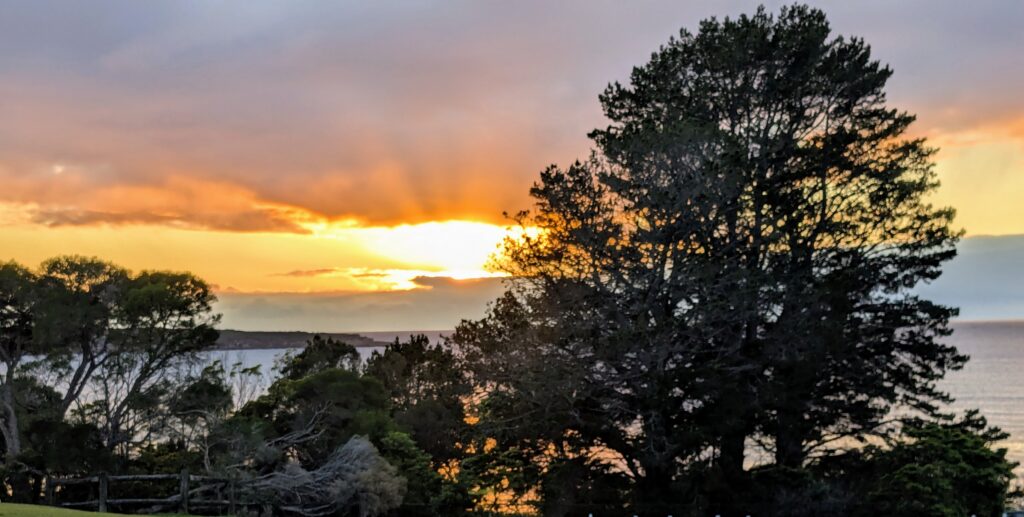
We left Eden at dawn, walking to the bus stop in the breaking rays of the morning sun.
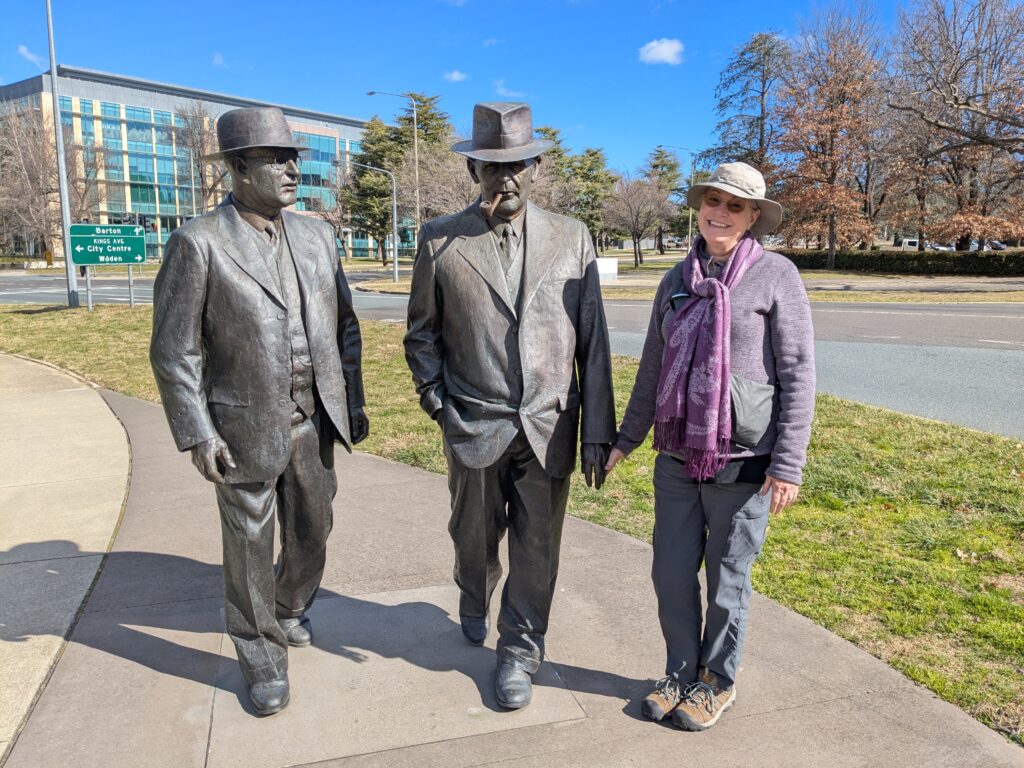
We arrived in Canberra for a long layover before our train was scheduled to Moss Vale. We had several hours to walk around the Capital sights. We met these fine gentlemen, John Curtin (14th Prime Minister of Australia, with glasses) and Ben Chifley (Treasurer during the Curtin Administration, with pipe). They led Australia through WW2 until Curtin died in 1945, a few months before the war ended, shortly after a photo was taken of them walking here on which this sculpture is based. Chifley became the 16th Prime Minister, the two of them being considered the best PM’s in Australian history.
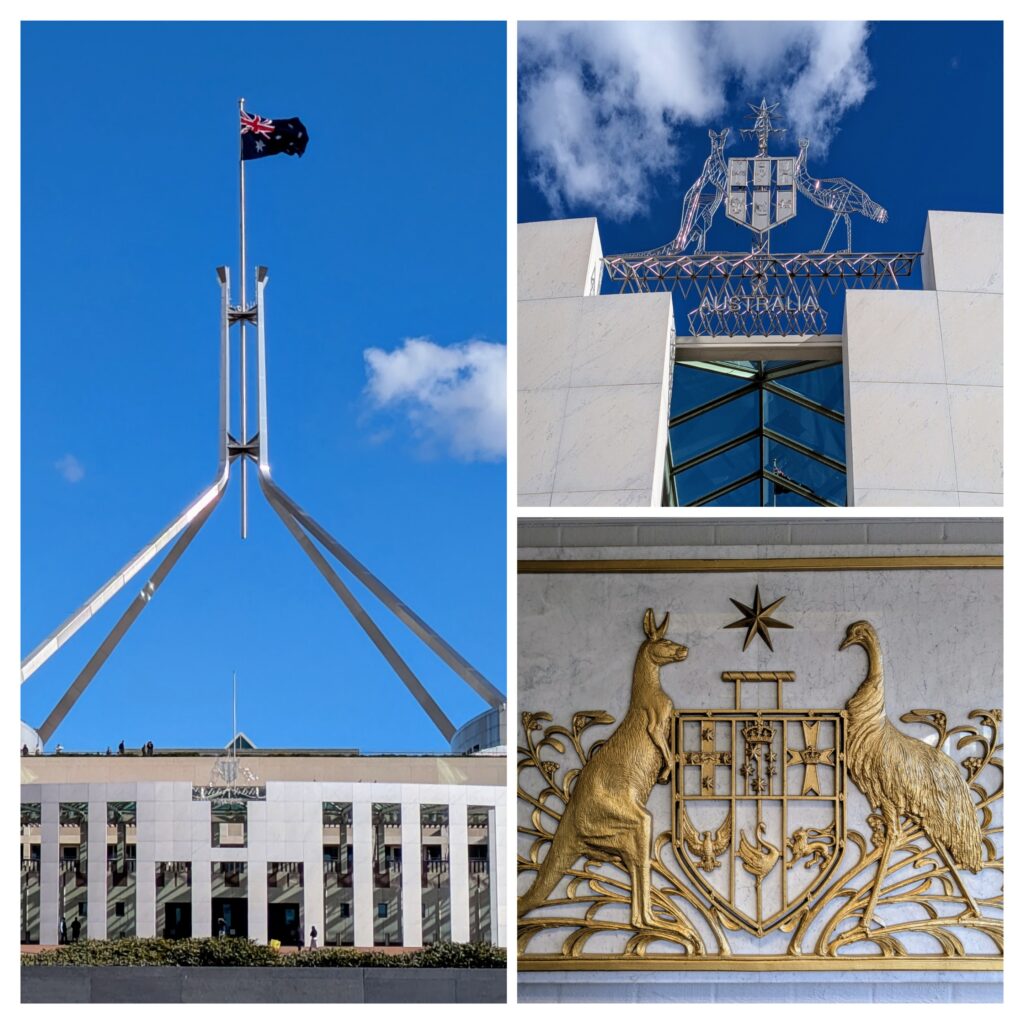
More sightseeing as we toured Parliament House.
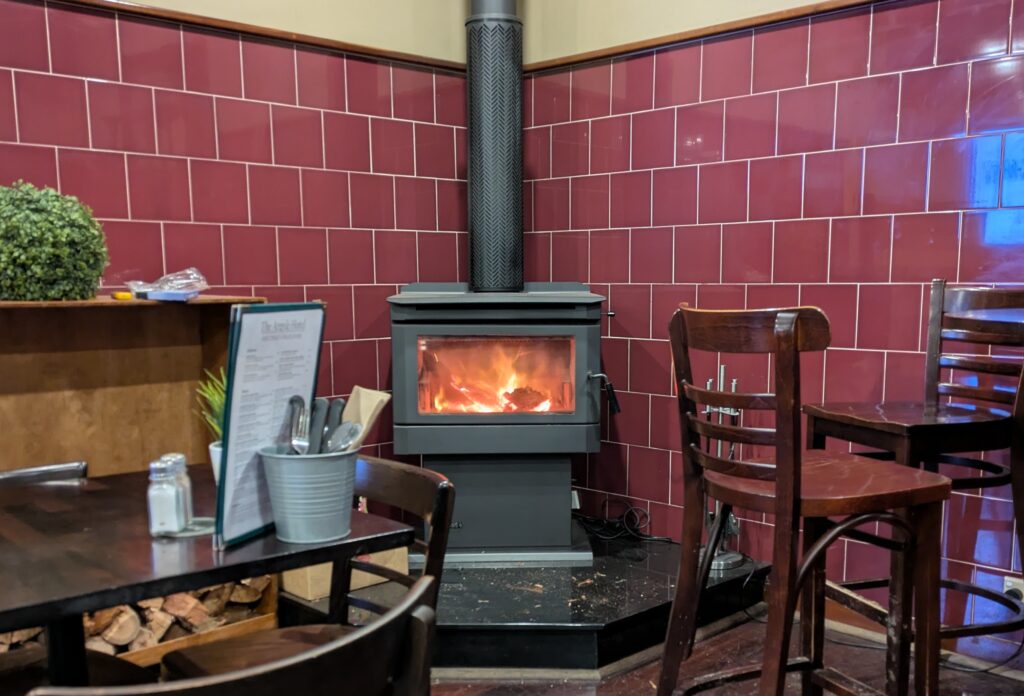
We ended the day by the warm woodstove, with dinner in the Pub of the Argyle Hotel where we stayed.
Aug 16, 2025 “The Law of the Tongue”
We visited the Eden Killer Whale Museum today to learn more about the unique shore-based whaling operations in Twofold Bay from the 1820’s to the 1920’s. The Europeans who established whaling operations in Twofold Bay in the 1820’s did so because humpback whales as well as southern right whales, minke and occasional blue whales migrate fairly close to shore here. However it wasn’t until the 1860’s when the Davidson family began a whaling operation that they incorporated the Aboriginal custom of utilizing killer whales in a partnership to hunt the larger whales. 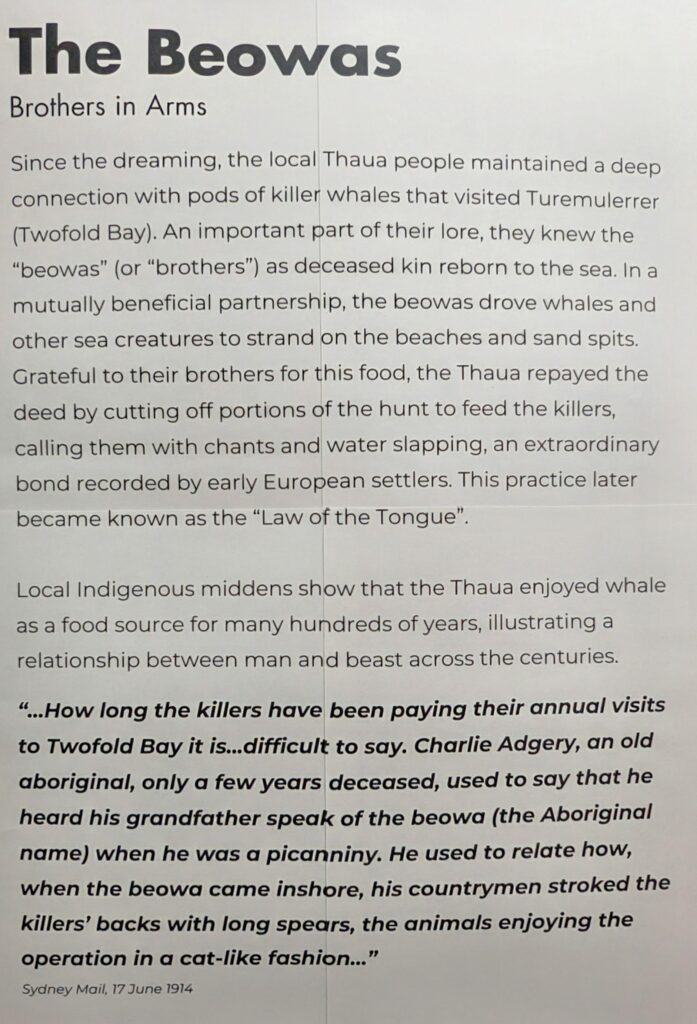
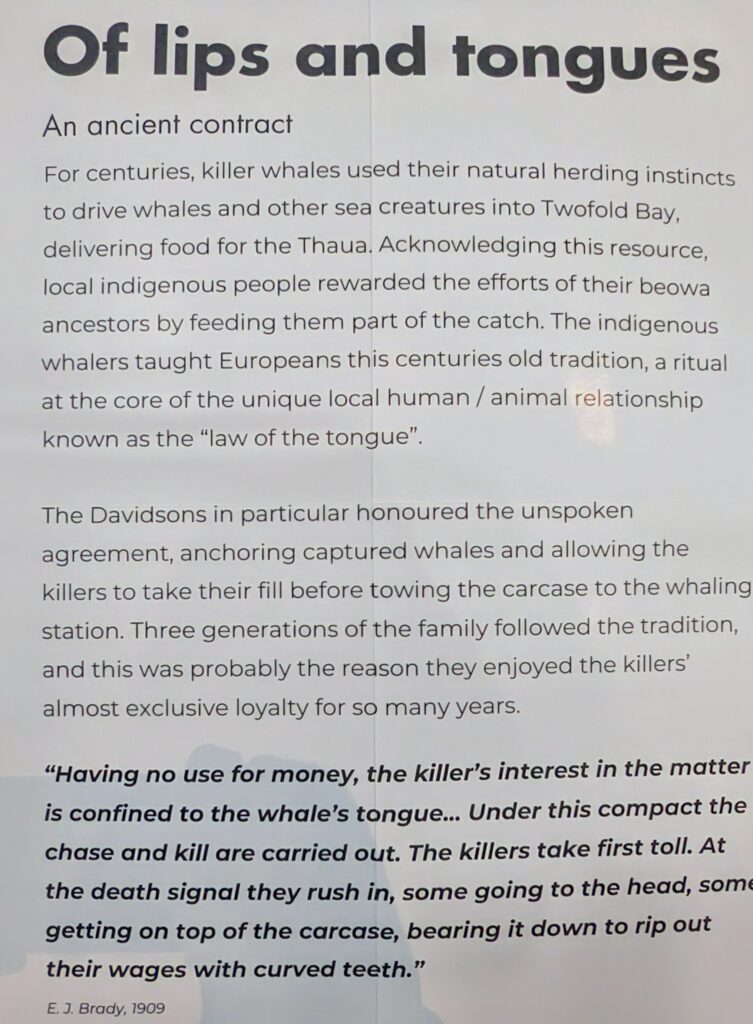
A mutually beneficial arrangement that eventually collapsed when the number of whales dropped precipitously in the early 20th century due to over harvesting (a nice way to say the whales were driven almost to extinction!). The killer whale pods that participated in this arrangement were very recognizable to the whalers and even named by them! ‘Old Tom’ was the most revered and probably the last of the pod. His body was found in 1930 and estimated to be at least 60 years old. His skeleton now hangs in the museum.
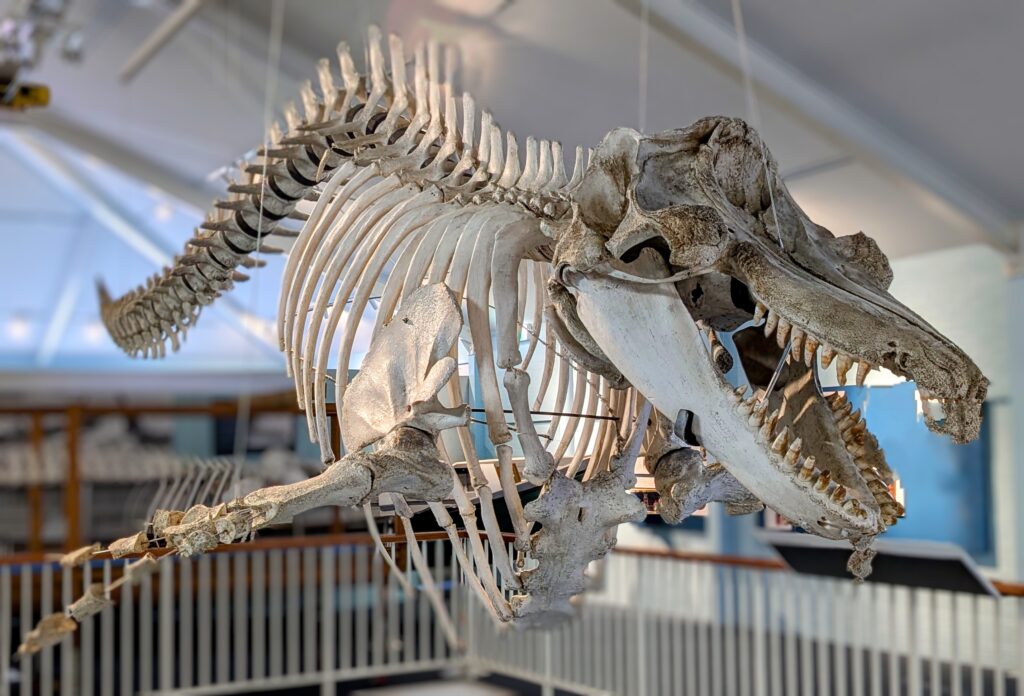
The skeleton of Old Tom. Notice the groove and missing teeth in the upper jaw. It’s said that Old Tom would be so enthusiastic during the hunt that he would grab the harpoon rope in his jaws and tow the boat or the injured whale!
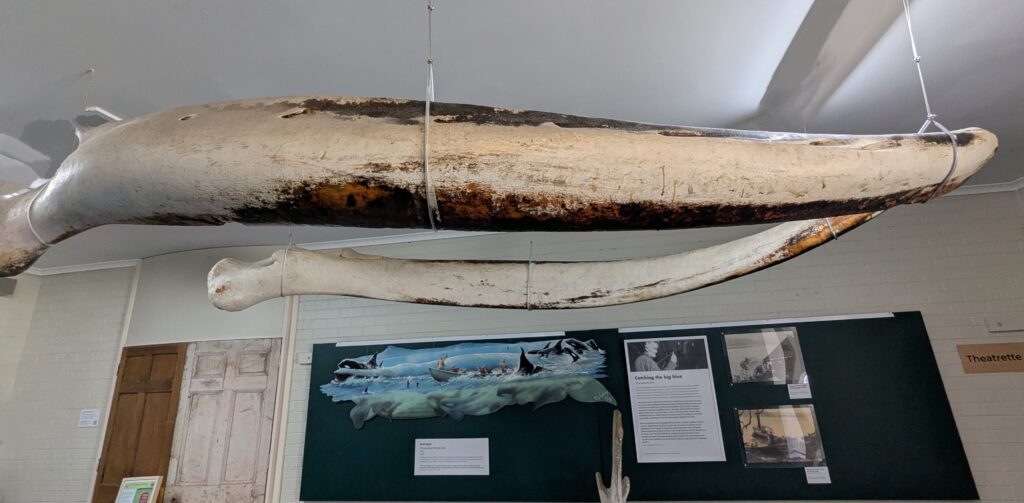
The jaw bones of the largest blue whale ever killed by hand thrown harpoon from an open boat, killed in Twofold Bay in 1908. The black discoloration is whale oil that is still dripping from the bones over 100 years since death!
Aug 16, 2025 Tathra Wharf
We went up-coast today to visit the Museum on the Tathra Wharf, full of the maritime and agricultural history of the area.
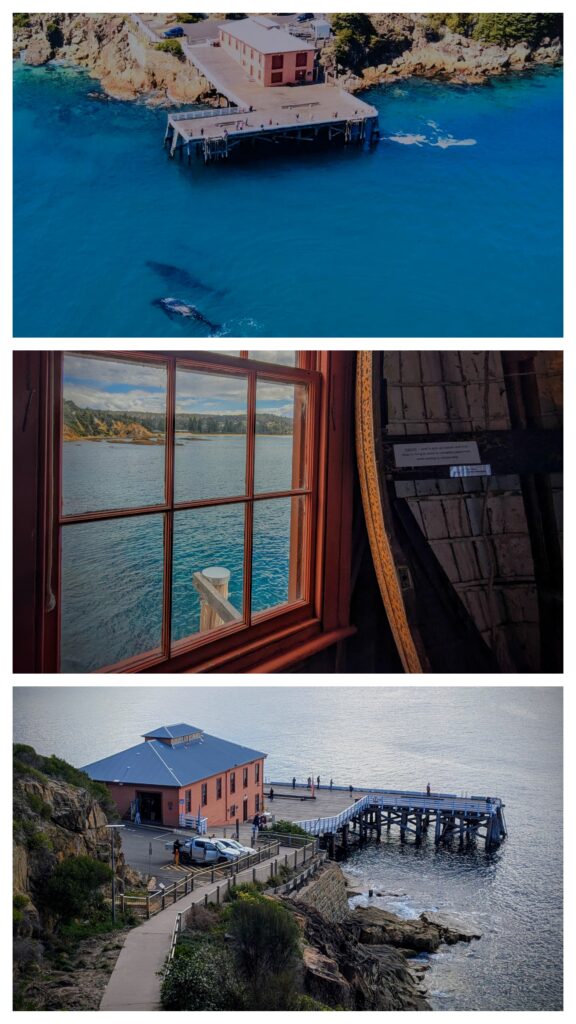
The top picture is on display in the museum and shows 2 whales visiting the calm waters of the bay!
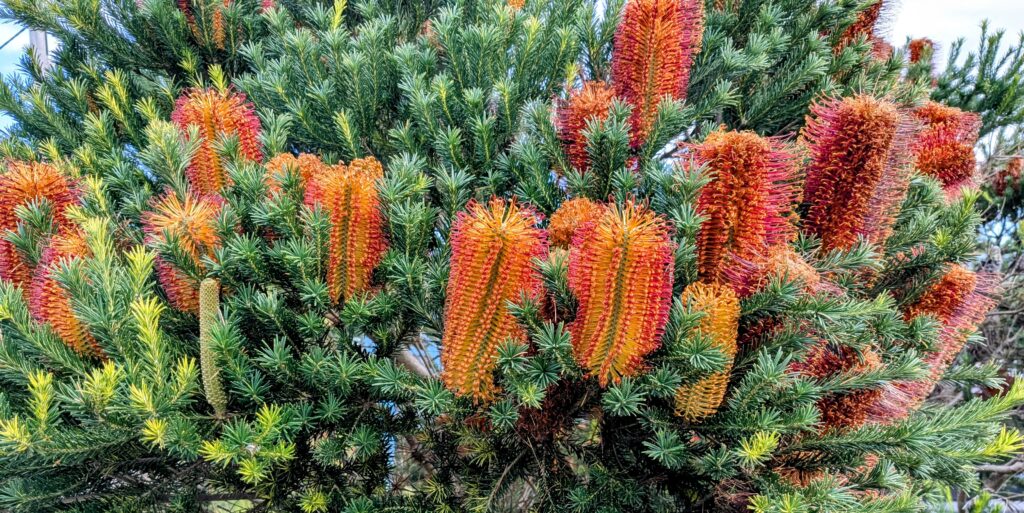
After perusing the displays in the Museum we followed the walkway up to the top of the headland to get a great view of the ocean and the native brush planted around the park after a brush fire destroyed the hilltop in 2018. These banksia bushes are blooming with their bottle-brush like flowers!
Aug 15, 2025 Relic of a Rainforest
We drove up, up, up into the gorges of the escarpment inland to visit the Goodenia Rainforest walking track, a short hike through a remnant of the rainforest that once covered this area of Australia 80 million years ago. Over the past many millenia the rainforest evolved into dryland vegetation like the eucalyptus forests we drove up through. A moist microclimate in a small gorge sustains this remnant of rainforest.
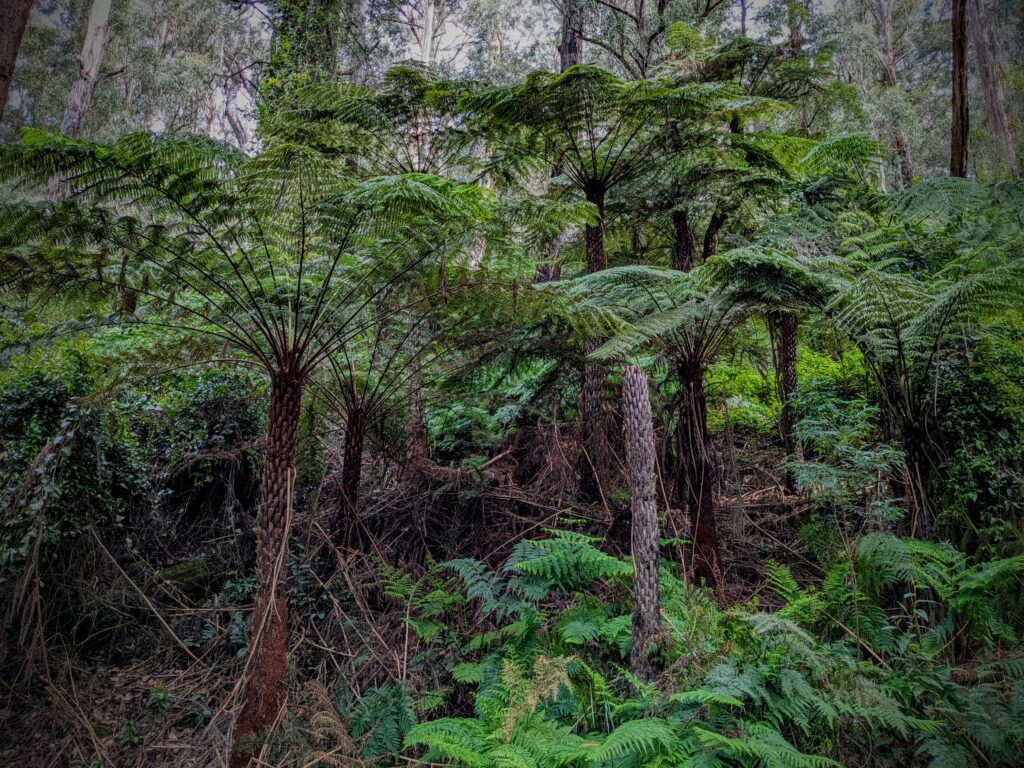
Tree ferns dominate as we hiked down to a small creek.
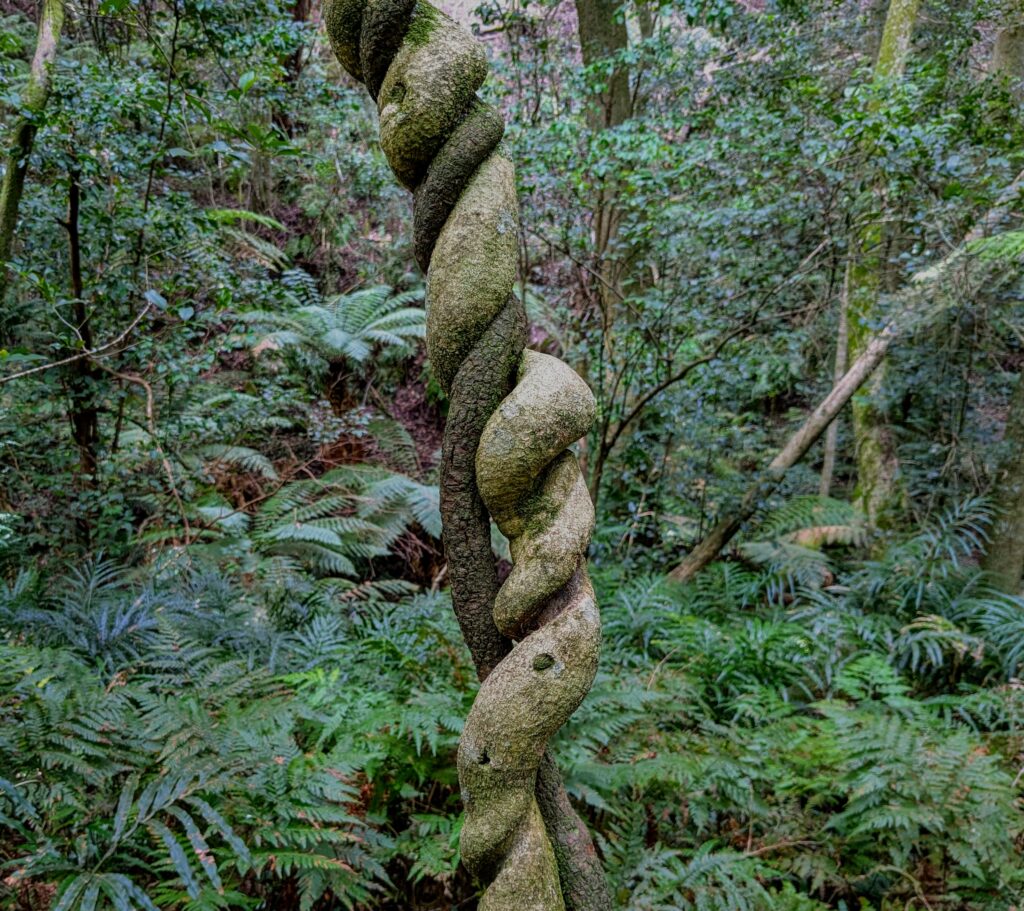
Vines twisting around each other hang from the large trees.
We descended from the escarpment back to the woodlands of the south coast and explored another short walk to the Pinnacles, an area of erosion exposing cliffs of soft white sand capped with a layer of red gravel clay.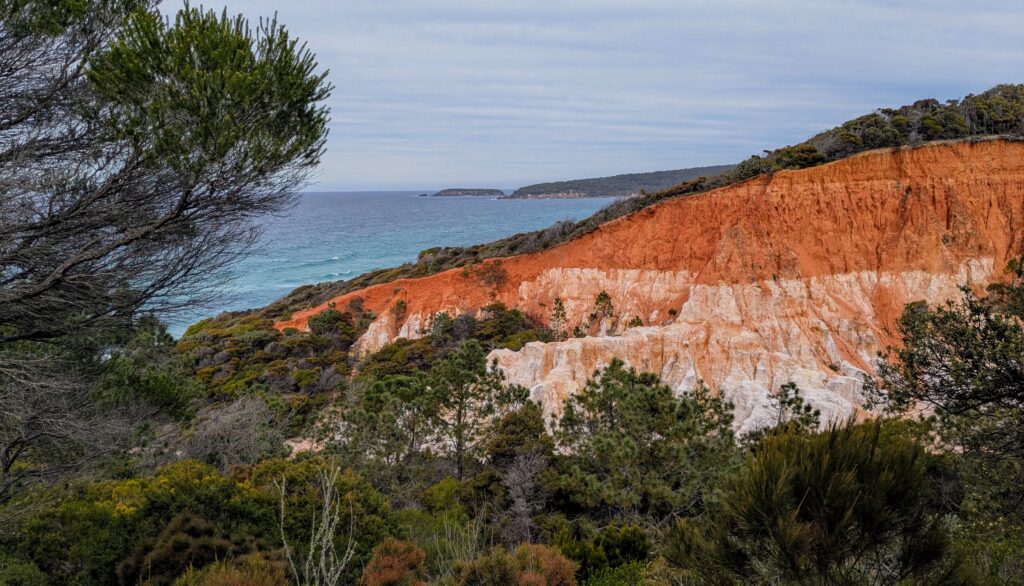
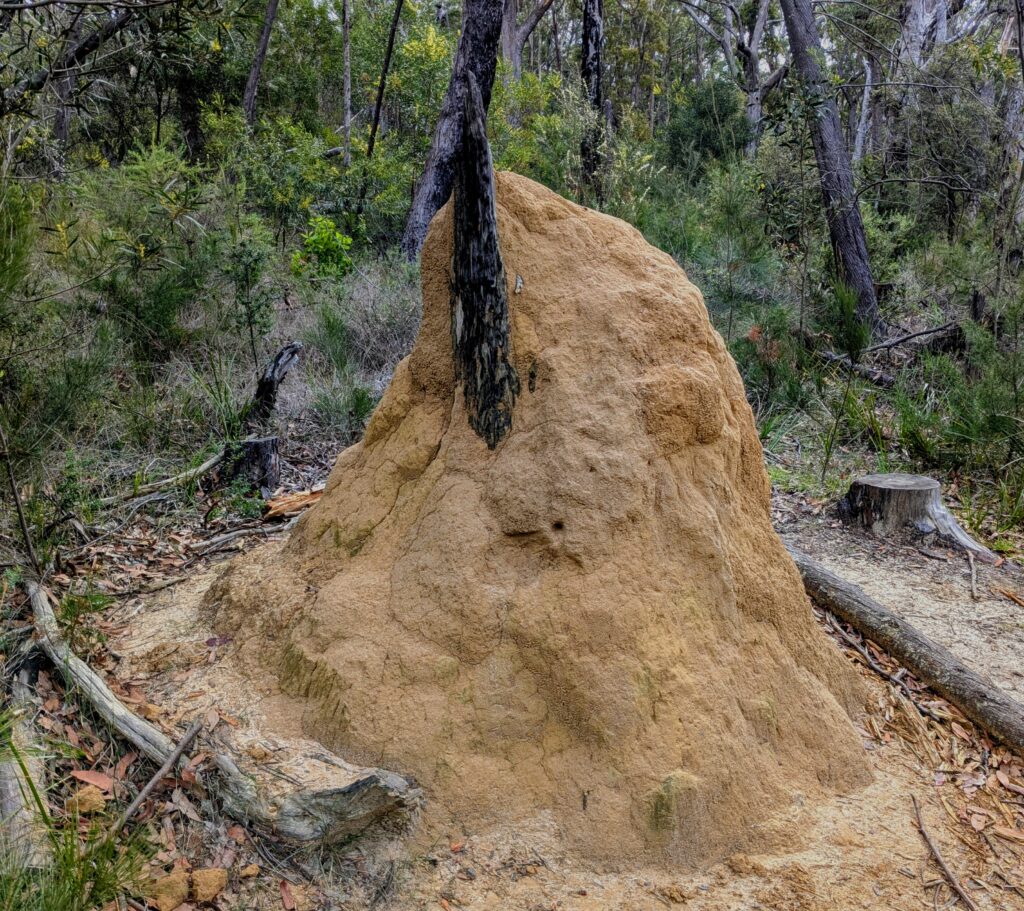
We encountered another termite mound, we’ve seen many of them in the forests along the coastal walks.
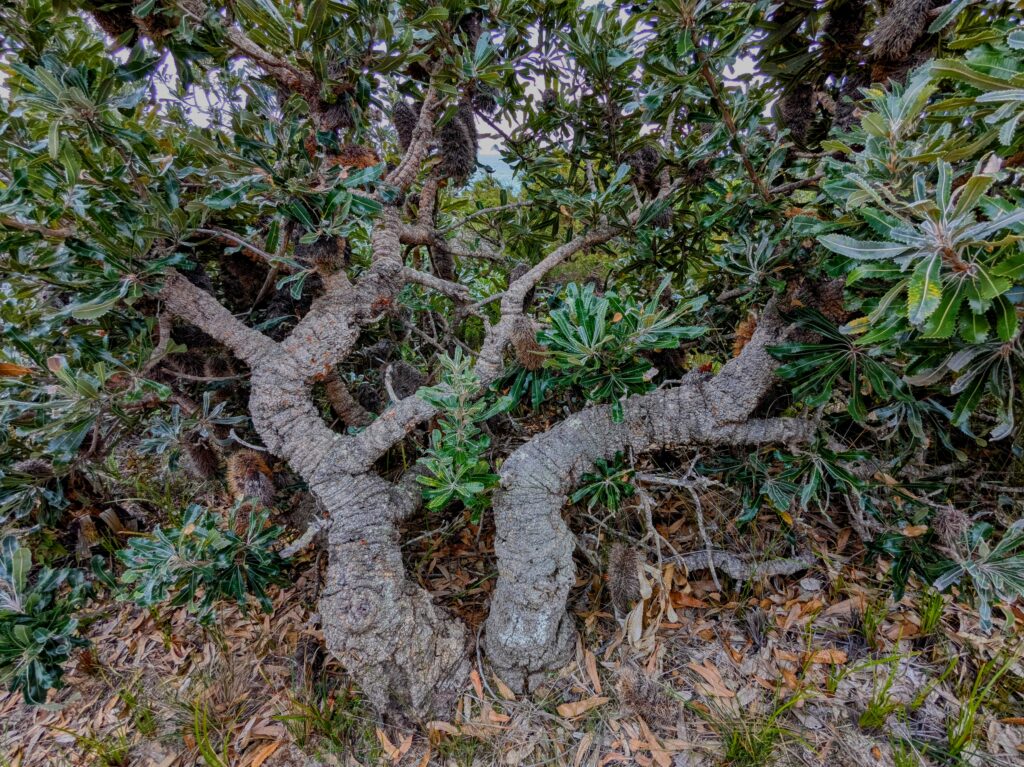
The gnarled banksia trees are quite distinctive. Most are covered with the dried flower heads that look like big bottle brushes.
Aug 14, 2025 The Other Light
We started our walk today from the other light, the ‘would-be’ lighthouse, known as Boyd Tower. It was built in 1848, financed by Benjamin Boyd, who was establishing the largest landholding enterprise in the colony of New South Wales.
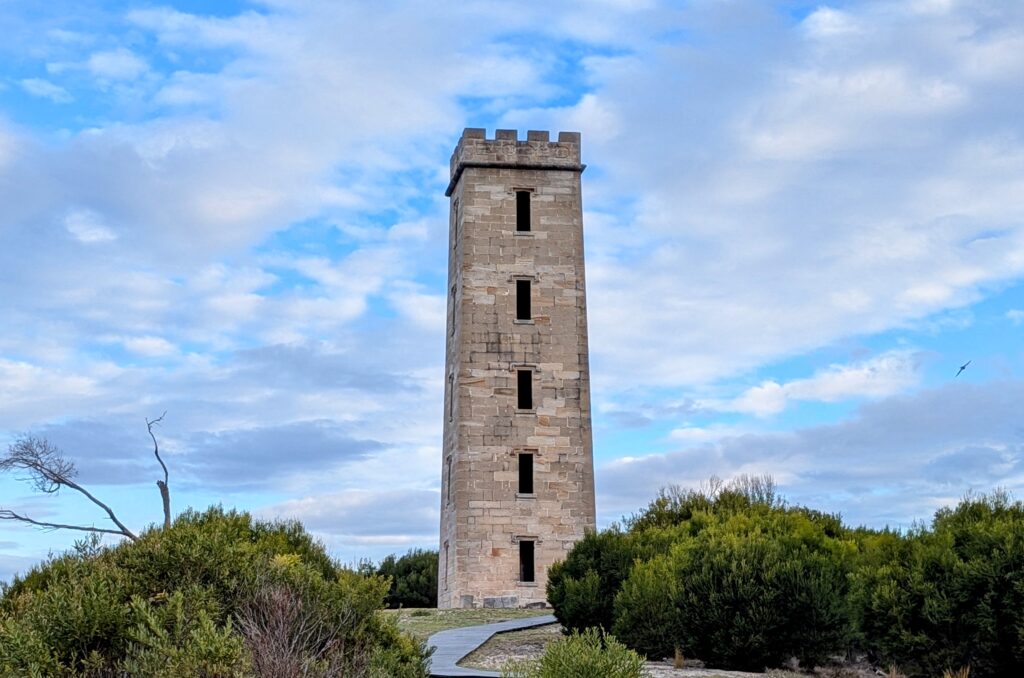
It was supposed to become a lighthouse, but was never used in that capacity.
Ben Boyd was bankrupt by 1849 and left Australia (and his debts) to try his luck in the California goldfields, ultimately meeting his fate by murder in Guadalcanal in the Solomon Islands in 1851, probably because of his propensity toward ‘blackbirding’, “the practice of coercing South Sea Islanders to work in circumstances akin to slavery.” The ‘lighthouse’ eventually became a whale spotting tower, used by the Davidson family who established a unique shore-based whaling station along the banks of Nullica Bay, one of the ‘folds’ of Twofold Bay.
We stopped on our way to our hike at The Seahorse Inn, built in 1843 as one of Ben Boyd’s ventures. It lay in disrepair for almost a century before finally being restored as a luxury boutique hotel!
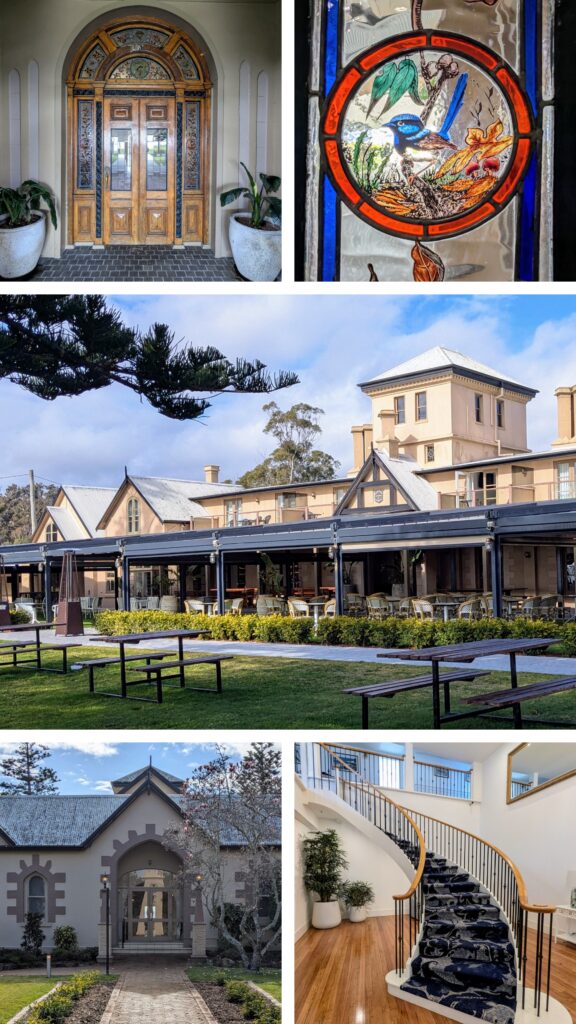
We enjoyed coffees and muffins while walking the grounds and admiring the beachfront view. The blue headed bird in the stained glass panel in the upper right is the fairy wren, a beautiful, colorful gem of a bird we have seen everywhere we’ve been so far in eastern Australia!

The hike itself was awesome! Red rock inlets with sapphire blue waters! This is known as the Sapphire Coast!


















